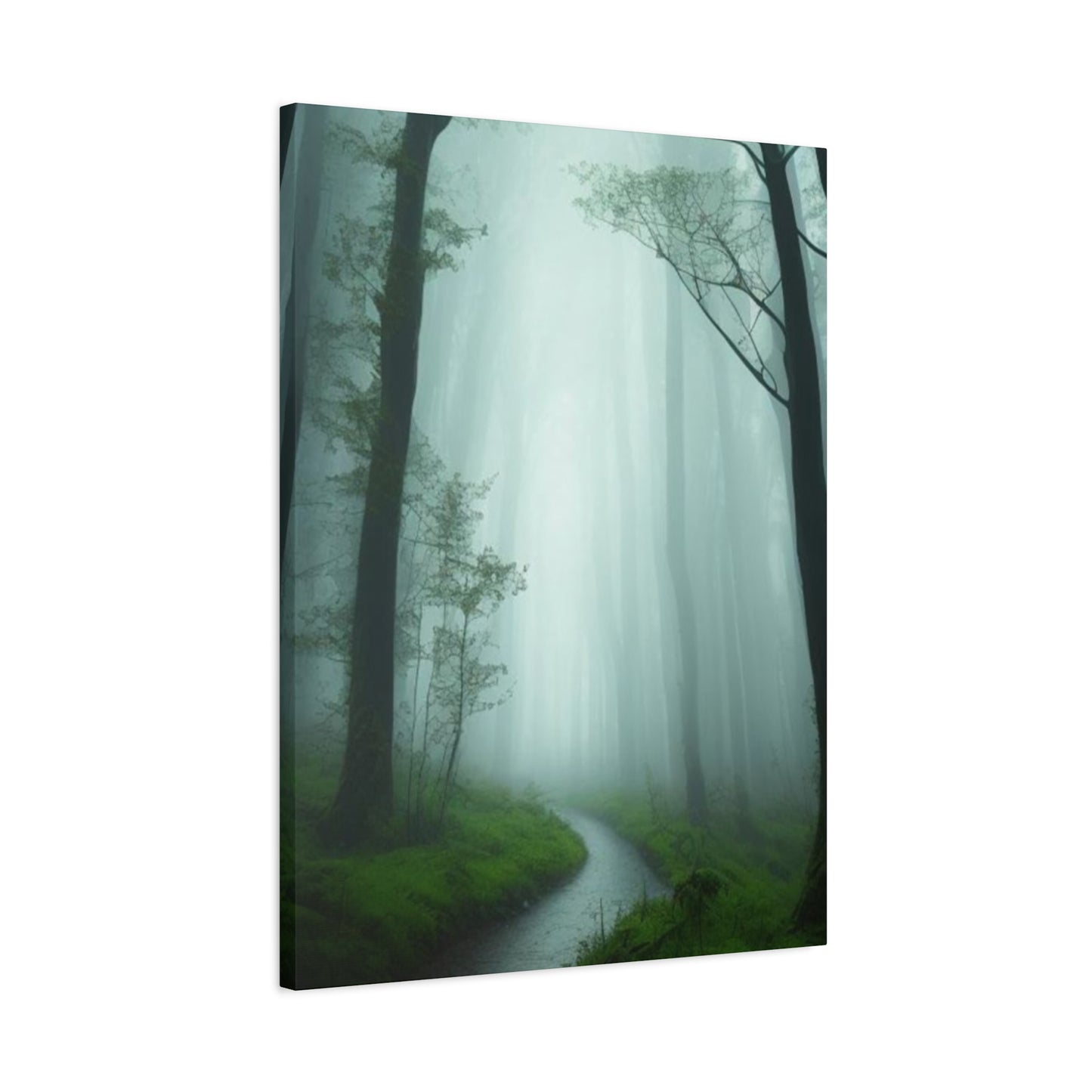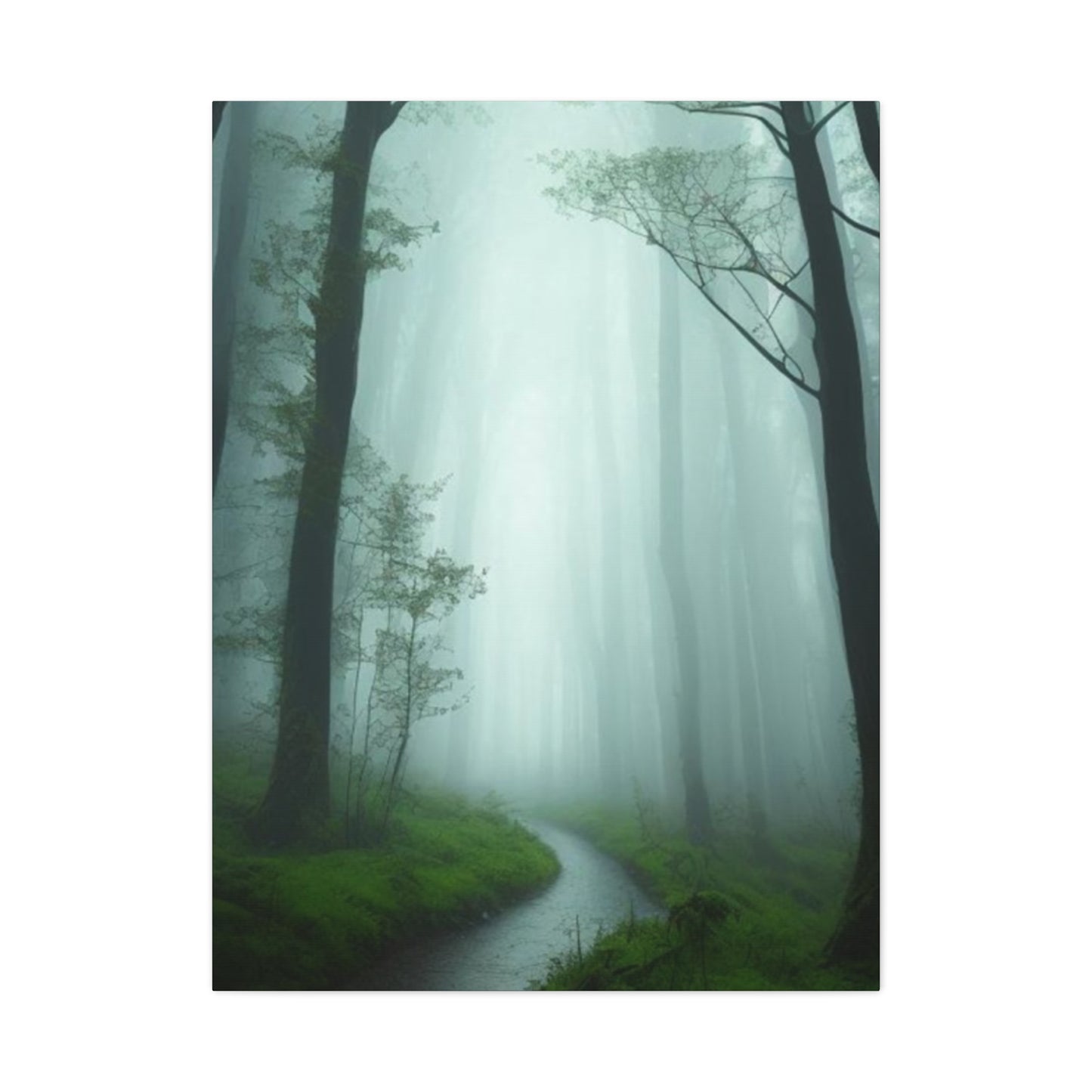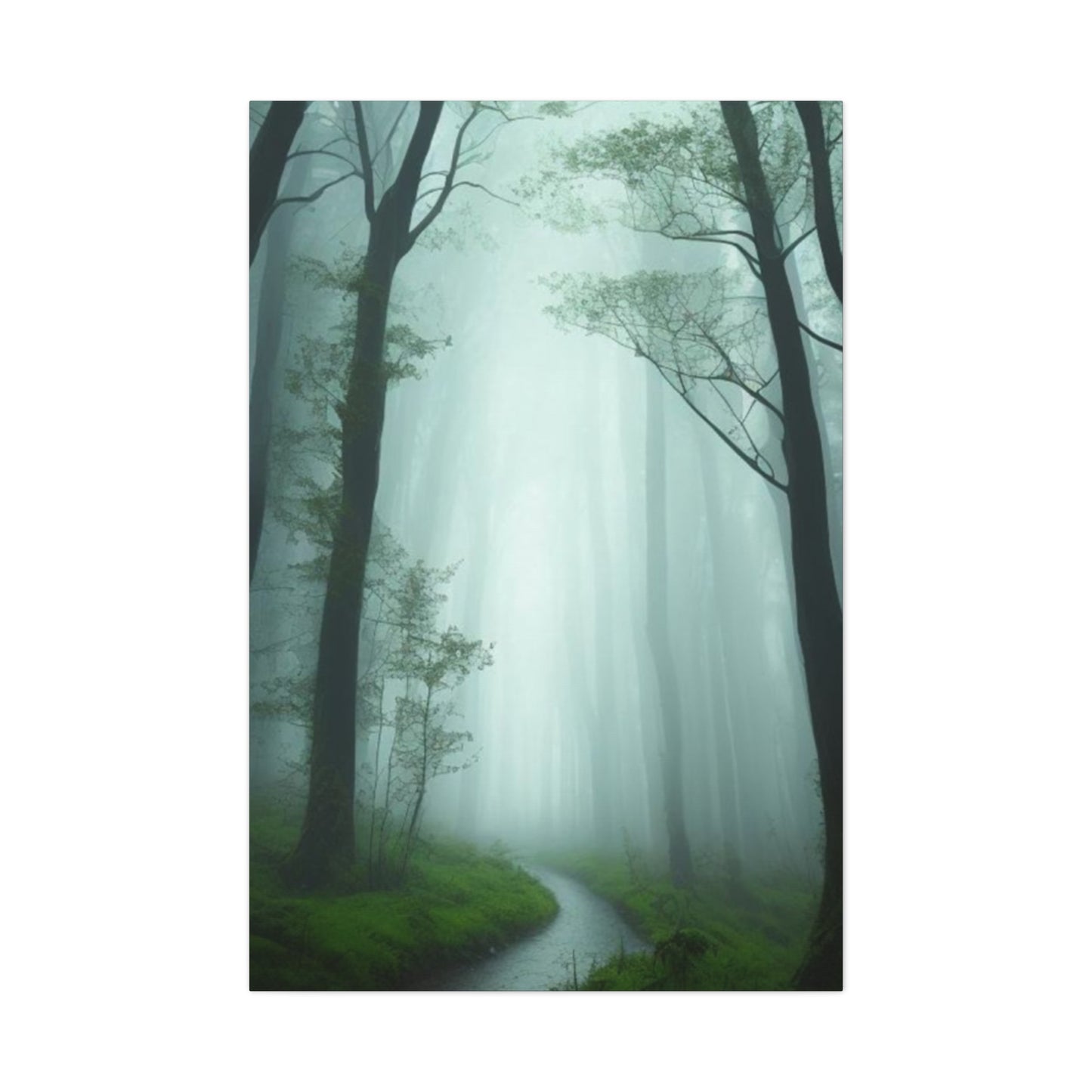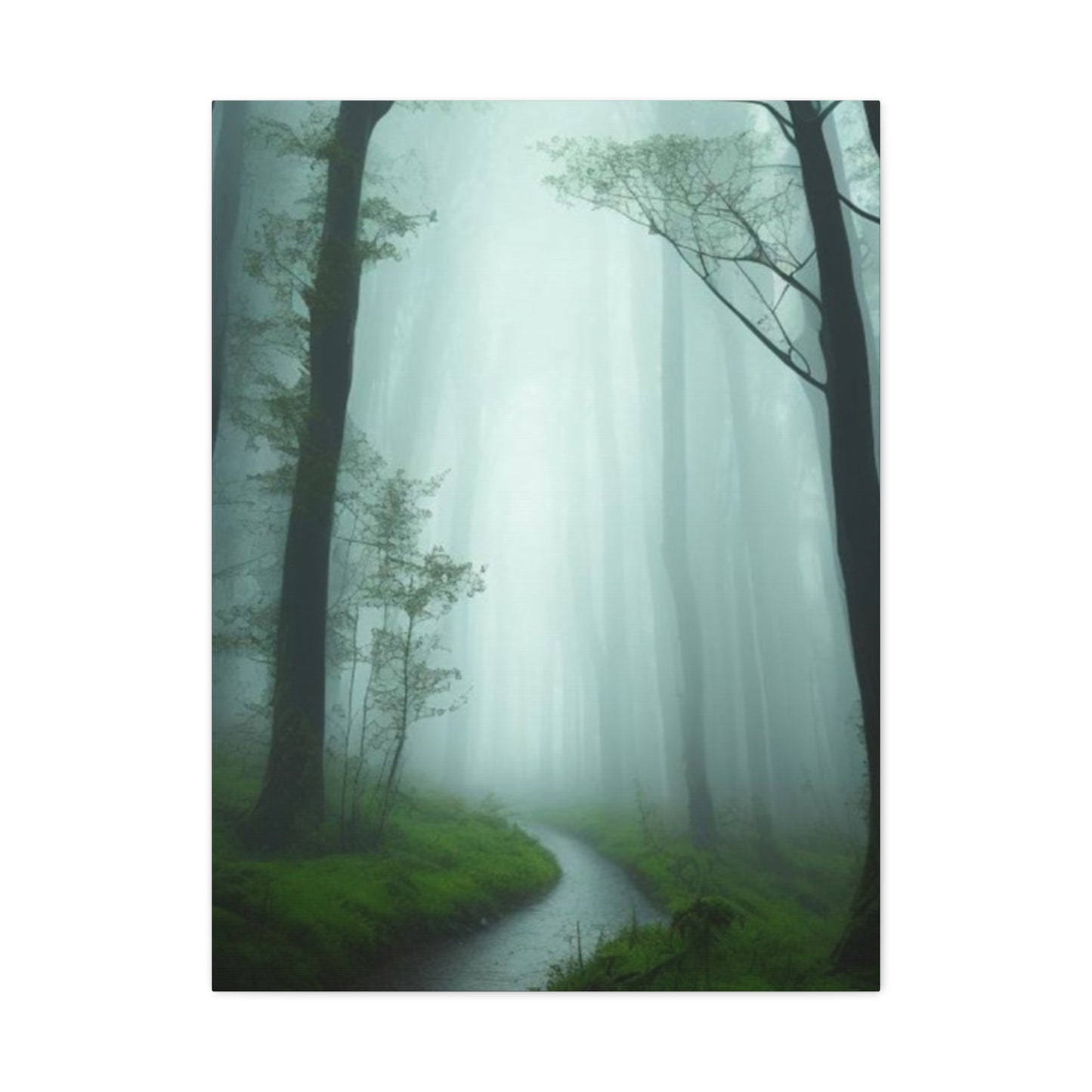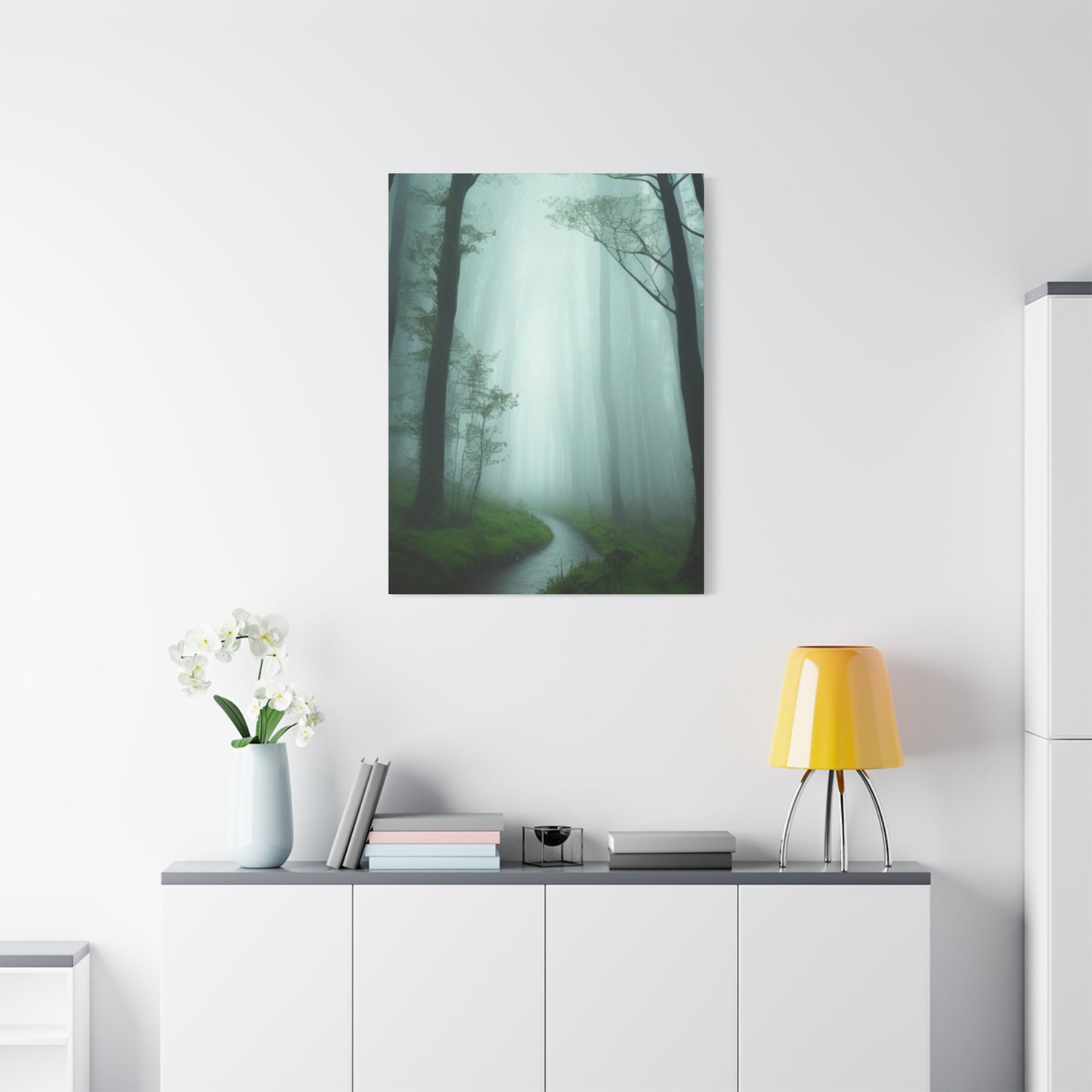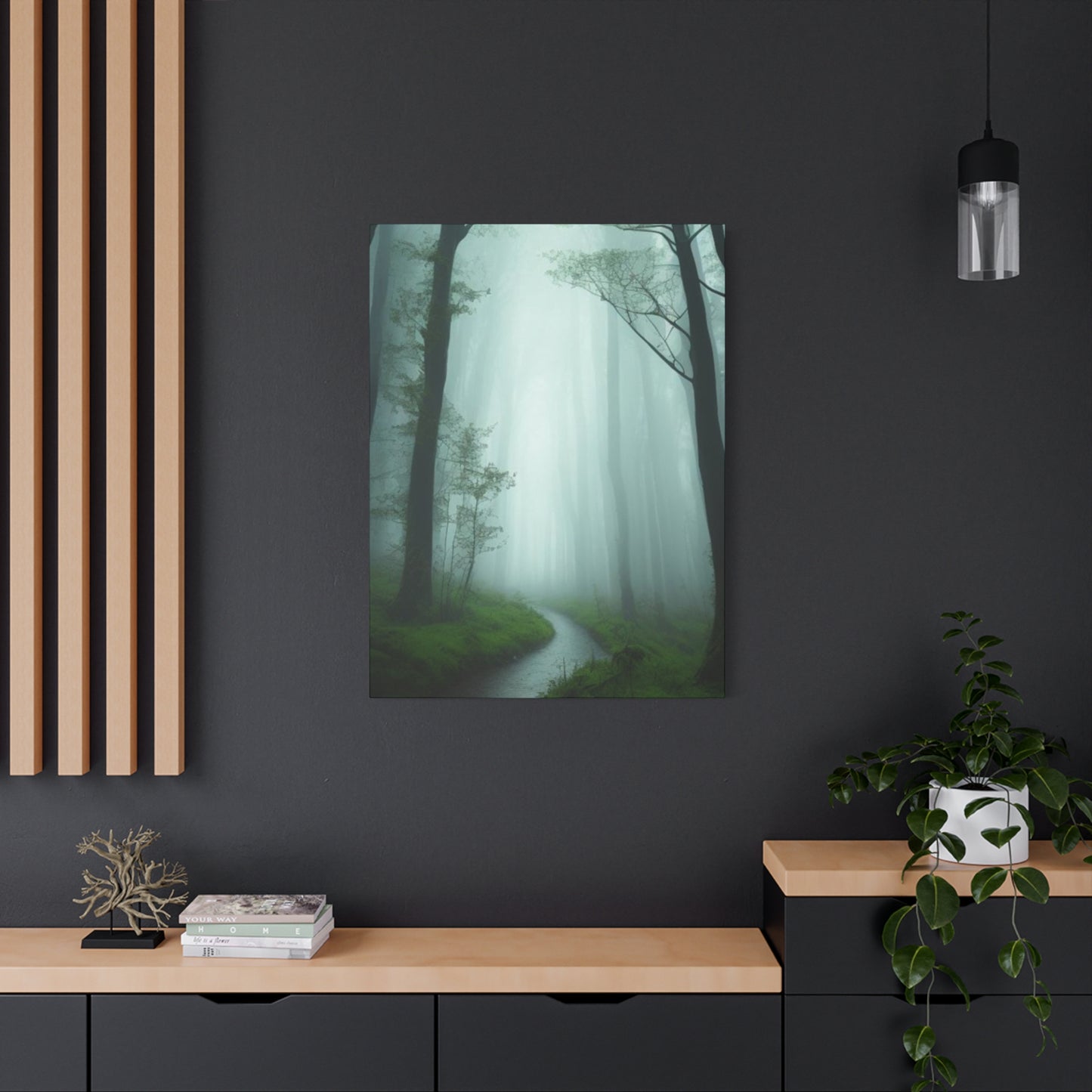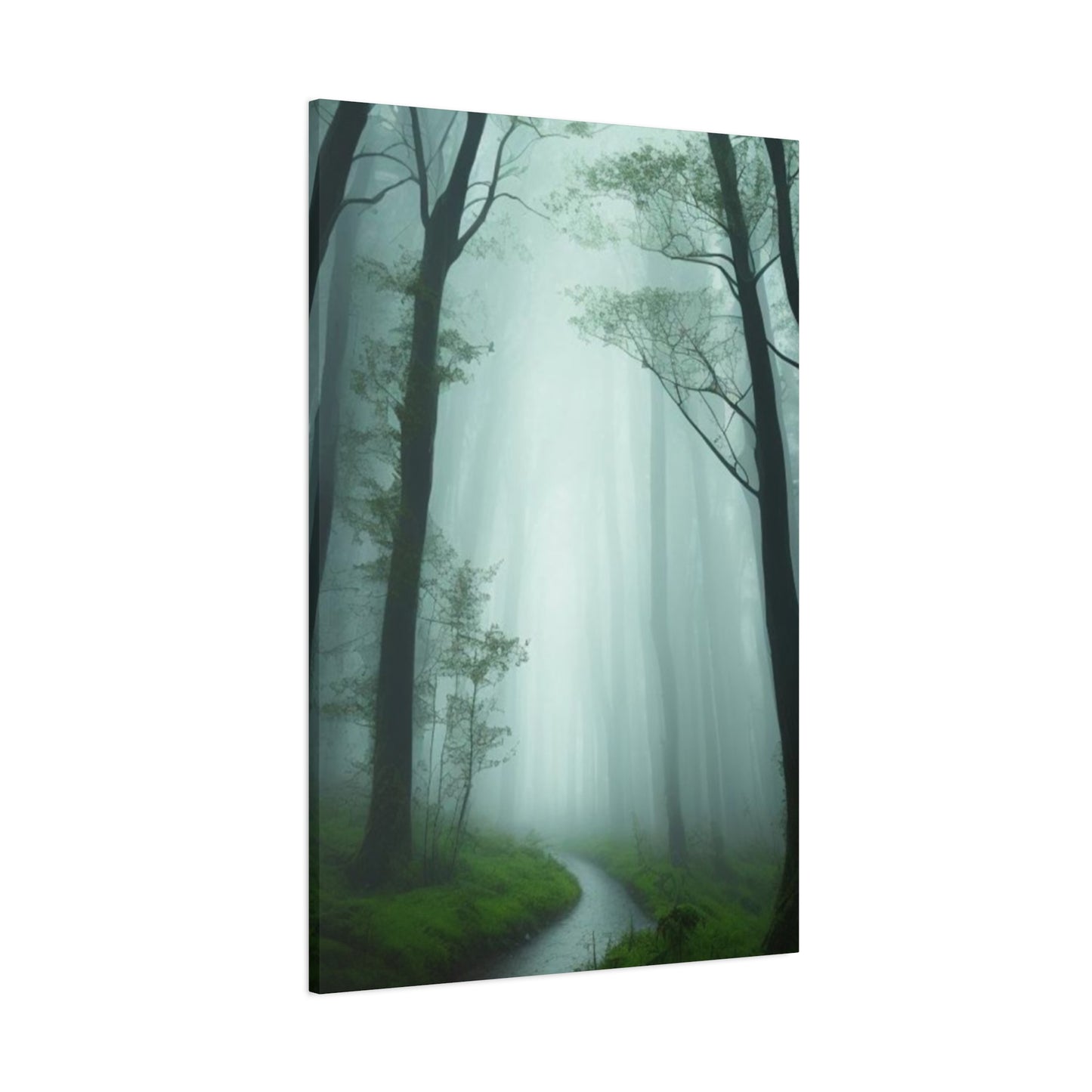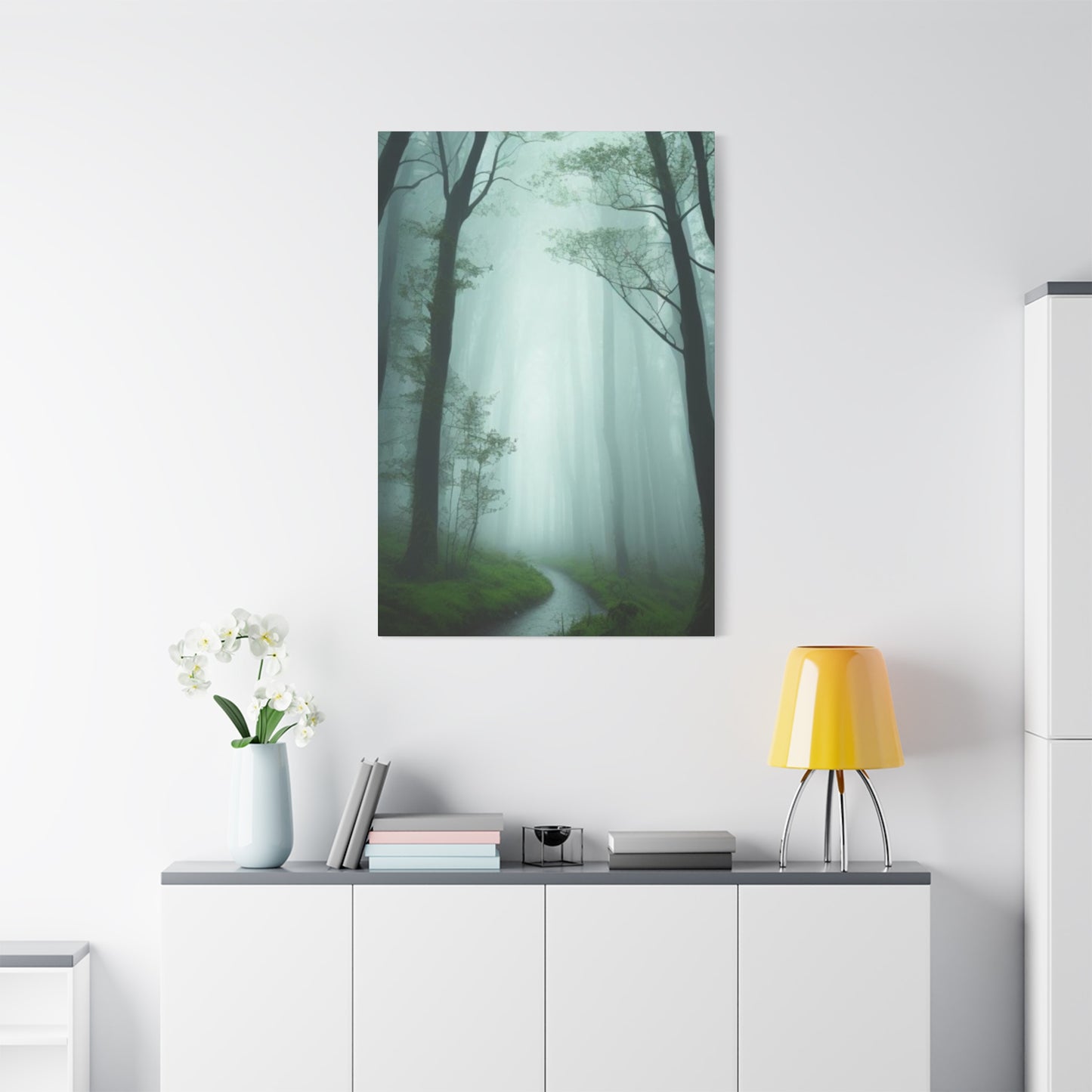Beauty of Biodiversity: How Tropical Rain Forest Wall Art Highlights Nature’s Complexity
Bringing the untamed beauty of nature indoors has become one of the most sought-after trends in contemporary interior design. The allure of verdant canopies, mysterious jungle pathways, and vibrant ecosystems captured on canvas offers homeowners and designers an opportunity to create immersive environments that celebrate the natural world. These artistic representations of dense vegetation and thriving wildlife provide more than mere decoration; they establish an emotional connection to some of Earth's most precious and endangered environments.
The popularity of nature-themed artwork continues to surge as people increasingly recognize the psychological benefits of surrounding themselves with organic imagery. Studies have shown that viewing natural scenes can reduce stress levels, improve mood, and enhance overall well-being. When you incorporate these powerful visual elements into your living or working spaces, you create sanctuaries that offer respite from the demands of modern life.
This comprehensive exploration will guide you through every aspect of selecting, displaying, and maintaining artwork that captures the essence of tropical ecosystems. Whether you're furnishing a minimalist apartment, revitalizing a corporate office, or creating a bohemian sanctuary, understanding how to effectively integrate these natural elements will elevate your design approach and transform ordinary rooms into extraordinary spaces.
Choosing Tropical Rain Forest Canvas Prints
Selecting the perfect artwork depicting lush jungle environments requires careful consideration of multiple factors that extend beyond simple aesthetic preference. The decision-making process should encompass your existing interior design scheme, the emotional atmosphere you wish to cultivate, and the practical considerations of your specific space.
Begin by evaluating the color palette already present in your room. Dense jungle scenes typically feature rich emerald greens, deep forest tones, and occasional bursts of brilliant color from exotic flowers or wildlife. These natural hues can either complement or provide striking contrast to your current furnishings. If your space features neutral tones like beige, cream, or gray, the vibrant greens will create a refreshing focal point that energizes the entire area. Conversely, if you've already incorporated bold colors, consider selecting artwork with more subdued tones to maintain visual balance.
The subject matter within the artwork deserves thoughtful attention. Some pieces focus primarily on the layered foliage and tangled vines that characterize these ecosystems, while others incorporate waterfalls, streams, or pools that add a water element to the composition. Wildlife inclusions such as colorful birds, butterflies, or other creatures can inject personality and storytelling into the artwork. Consider what resonates most deeply with your personal connection to nature and what narrative you want the piece to convey to viewers.
Scale represents another crucial consideration in your selection process. The dimensions of the artwork should correspond appropriately to the wall space available and the viewing distance. A common mistake involves selecting pieces that are too small for the designated wall, resulting in the artwork appearing insignificant or lost within the larger space. Generally, artwork should occupy between two-thirds and three-quarters of the available wall width to achieve proper visual proportion.
Quality considerations should never be overlooked when investing in artwork that will significantly impact your environment. High-resolution printing techniques ensure that every detail of the jungle scene remains crisp and vivid, from individual leaf textures to subtle light filtering through the canopy. The canvas material itself should be durable and properly stretched over a sturdy frame to prevent warping or sagging over time. Many premium options feature gallery-wrapped edges where the image continues around the sides, eliminating the need for additional framing and creating a more contemporary presentation.
The artistic style of the piece should align with your overall design philosophy. Photographic representations offer realistic detail that can make viewers feel as though they're peering into an actual jungle clearing. Impressionistic or painterly styles provide a softer, more romantic interpretation of tropical environments that may better suit spaces seeking a dreamlike or whimsical quality. Abstract interpretations that capture the essence of jungle energy through color and form work exceptionally well in modern or avant-garde settings.
Lighting conditions in your chosen location will dramatically affect how the artwork appears throughout the day. Natural light brings out the vibrancy of greens and highlights subtle details, but direct sunlight can cause fading over time. If your wall receives strong sunlight, look for prints that feature UV-protective coatings or consider your lighting arrangement carefully. In spaces with limited natural light, the artwork can actually help brighten the area by introducing lighter tones within the composition.
Personal emotional response should ultimately guide your final selection. Stand before potential choices and notice your visceral reaction. Does the piece transport you to a peaceful jungle sanctuary? Does it energize you with its vibrant life force? The artwork you select should evoke the specific emotional state you wish to cultivate in that particular space. This intuitive connection ensures that your selection will provide lasting satisfaction rather than becoming just another decorative element you overlook.
Consider the room's purpose when making your selection. Spaces designed for relaxation, such as bedrooms or meditation areas, benefit from tranquil jungle scenes featuring soft morning light or misty atmospheres. Active spaces like home offices or exercise rooms can handle more dynamic compositions with stronger contrasts and more visual energy. Living areas that serve multiple functions require versatile pieces that work equally well for entertaining and quiet family time.
The frame or edge treatment deserves attention as it impacts how the artwork integrates with your existing decor. Traditional frames in wood tones can lend warmth and classic appeal, while sleek black or metallic frames create contemporary sophistication. Frameless gallery-wrapped options offer clean, modern presentation that allows the imagery to take center stage without competing elements.
Budget considerations naturally influence your choices, but remember that this artwork represents an investment in your daily environment and mental well-being. Higher-quality pieces may command greater initial expense but typically offer superior longevity, better color accuracy, and more impressive visual impact. Many sources offer payment plans or seasonal sales that make premium options more accessible without compromising on quality.
Jungle-Inspired Wall Art Ideas
Creating an interior environment that captures the exotic essence of tropical wilderness requires imagination, creativity, and strategic planning. The concept extends far beyond simply hanging a single piece of artwork; it involves developing a cohesive visual narrative that transforms your space into an immersive experience reminiscent of exploring ancient jungle pathways.
One compelling approach involves creating a multi-panel arrangement that tells a progressive story of jungle exploration. Begin with a panel depicting the outer edges of the forest, where sunlight still penetrates the canopy and vegetation remains somewhat open. The subsequent panels gradually transition deeper into the jungle interior, where light becomes dappled and mysterious, and the foliage grows increasingly dense. This progression creates visual movement that guides the eye across the wall and invites viewers on a journey into the heart of the wilderness.
Layering different sizes and shapes of jungle imagery creates dynamic visual interest that mimics the chaotic beauty of actual rainforest environments. Combine a large horizontal piece depicting a sweeping canopy view with smaller vertical pieces showing towering tree trunks or cascading vines. This varied arrangement prevents monotony and reflects the diverse perspectives one would encounter while navigating through actual jungle terrain.
Incorporating three-dimensional elements amplifies the immersive quality of your jungle-inspired wall display. Consider adding actual preserved plant specimens in shadow boxes, mounted between canvas pieces. Dried palm fronds, preserved ferns, or even ethically sourced butterfly displays create tactile variety that engages multiple senses. These dimensional additions bridge the gap between artwork and actual natural elements, strengthening the connection to authentic jungle environments.
Color coordination across multiple pieces ensures visual harmony even when using diverse images. Select artwork that shares common color threads, perhaps various shades of emerald and jade green punctuated by consistent accent colors like the warm orange of exotic flowers or the brilliant blue of tropical birds. This color cohesion creates unity while still allowing each individual piece to contribute its unique perspective.
Thematic consistency provides another effective strategy for creating compelling jungle-inspired displays. You might focus exclusively on canopy views looking upward through layers of leaves toward patches of sky, creating a sense of being sheltered beneath nature's architecture. Alternatively, concentrate on ground-level perspectives featuring jungle floors covered in fallen leaves, mushrooms, and emerging seedlings. This focused approach creates a more immersive and believable environment than randomly selected jungle scenes.
Mixing different artistic mediums introduces textural variety that enhances visual appeal. Combine photographic canvas prints with watercolor interpretations of tropical plants or pen-and-ink drawings of jungle wildlife. This eclectic approach works particularly well in creative spaces like studios or bohemian living areas where artistic expression is celebrated. The contrast between mediums highlights the different ways artists interpret and celebrate these magnificent ecosystems.
Seasonal rotation of jungle artwork allows you to refresh your space without complete redesigns. Maintain a collection of pieces that emphasize different aspects of tropical environments. During warmer months, display vibrant scenes filled with blooming flowers and active wildlife. In cooler seasons, transition to more serene pieces featuring misty morning scenes or the cool shadows of dense undergrowth. This rotation keeps your environment feeling fresh and responsive to the changing year.
Incorporating water elements within your jungle artwork collection creates soothing focal points that enhance the peaceful qualities of these natural scenes. Pieces featuring jungle waterfalls, meandering streams, or rain-soaked foliage introduce movement and the psychological suggestion of sound, even in silent visual form. The presence of water imagery has been shown to increase feelings of tranquility and can be particularly effective in spaces designed for stress reduction.
Creating unexpected juxtapositions generates visual interest and contemporary edge. Position a highly detailed, realistic jungle print beside an abstract piece that captures jungle energy through bold brushstrokes and intense color rather than representational imagery. This contrast invites viewers to consider different interpretations of the same subject matter and adds intellectual depth to your decorative scheme.
Lighting design plays a crucial role in bringing jungle-inspired wall displays to life. Install picture lights above key pieces to create dramatic emphasis during evening hours. Consider LED strip lighting behind larger pieces to create a subtle glow that makes the artwork appear to emanate light, suggesting the luminous quality of sunlight filtering through jungle canopy. Smart lighting systems that adjust color temperature throughout the day can enhance the natural qualities of your jungle imagery, moving from cool morning tones to warm afternoon hues.
Decorating with Tropical Canvas Art
Successfully incorporating artwork depicting lush tropical environments into your existing decor requires understanding how these powerful natural images interact with other design elements. The process involves balancing the visual weight of verdant imagery with furnishings, textiles, and accessories to create cohesive spaces that feel intentional rather than haphazard.
Furniture selection and arrangement significantly impact how tropical artwork integrates into your overall design. Natural materials like rattan, bamboo, teak, and wicker create obvious connections to the organic themes presented in jungle imagery. These materials echo the textures visible in the artwork and establish a harmonious relationship between functional pieces and decorative elements. However, tropical artwork also pairs beautifully with unexpected materials like concrete, metal, and glass, creating sophisticated contrasts that prevent spaces from feeling overly themed or heavy-handed.
Textile choices throughout your space should complement rather than compete with the complex patterns and rich colors found in tropical artwork. Solid-colored fabrics in neutral tones provide restful areas for the eye and allow the artwork to command attention without visual interference. When you do incorporate patterns, select geometric designs or subtle textures rather than competing botanical prints. If you want to echo the natural themes, choose textiles with large-scale, simplified leaf patterns that suggest rather than replicate the detailed imagery in your artwork.
The placement of tropical artwork within architectural features maximizes impact and creates intentional focal points. Position a commanding piece above a fireplace mantel to draw the eye upward and establish a clear center of attention in living areas. In dining spaces, artwork placed at eye level when seated creates an engaging backdrop for meals and conversations. Hallways and transitional spaces benefit from series of smaller pieces arranged in progression, creating visual interest in areas that might otherwise feel neglected.
Color extraction from your tropical artwork provides a sophisticated approach to developing your entire room palette. Identify secondary colors within the piece—perhaps the warm terracotta of tree bark, the soft blue of a distant sky, or the golden yellow of filtered sunlight. Incorporate these extracted colors into pillows, throws, or small accessories throughout the room. This technique creates subtle connections that make the artwork feel integrated rather than arbitrarily placed.
Negative space management proves essential when decorating with visually complex jungle imagery. These pieces often feature dense detail and saturated colors that can overwhelm if not balanced with adequate breathing room. Resist the temptation to fill every wall surface or crowd the artwork with numerous smaller decorative items. Instead, allow significant empty wall space around key pieces, letting them stand as powerful statements without competing elements cluttering the visual field.
Scale variation creates rhythm and prevents monotony in rooms featuring multiple pieces of tropical artwork. Combine one or two substantial statement pieces with several smaller complementary works. This variation in scale mimics the layered composition of actual jungle environments where towering trees dominate above smaller understory plants. The size difference also allows you to create dynamic arrangements that guide the eye through the space in deliberate patterns.
Introducing live plants alongside your tropical artwork strengthens the connection to authentic natural environments. Strategic placement of potted palms, ferns, philodendrons, or other tropical species creates a bridge between the two-dimensional imagery on your walls and the three-dimensional reality of your living space. The living plants validate the aesthetic established by the artwork and introduce beneficial air-purifying qualities while adding subtle movement and the possibility of gentle growth and change over time.
Flooring choices interact surprisingly significantly with wall-mounted tropical artwork. Natural hardwood floors in medium to dark tones ground the space and provide a stable base that allows vibrant wall art to float visually. Light-colored floors in pale wood or stone reflect more light upward, brightening both the room and the appearance of the artwork. Area rugs in natural fibers like jute or sisal reinforce organic themes, while plush options in solid colors create luxurious comfort that contrasts appealingly with the wild energy of jungle imagery.
Window treatments should be considered in relationship to your tropical artwork to ensure cohesive flow throughout the space. Sheer fabrics in natural tones allow maximum light penetration, which benefits rooms featuring lighter, more ethereal jungle scenes. Heavier drapes in solid colors frame windows decisively and can pick up accent colors from the artwork, creating intentional color connections. Bamboo or wooden blinds echo natural materials visible in the artwork and provide excellent light control without introducing competing patterns.
Metallic accents add unexpected sophistication when decorating with tropical artwork. Gold elements particularly complement the warm tones often found in jungle scenes lit by tropical sunlight. Brass planters, gold-framed mirrors, or copper accessories introduce glamour that elevates the natural theme beyond rustic or casual territory. Silver and chrome finishes work beautifully with artwork featuring cooler tones or misty morning scenes, creating crisp, contemporary environments.
Creating vignettes around your tropical artwork extends the decorative impact beyond the wall surface itself. Arrange a console table beneath a significant piece and style it with objects that echo themes from the artwork—perhaps a collection of interesting stones, a sculptural piece of driftwood, or coffee table books about nature and conservation. These curated groupings create layers of interest that reward closer inspection and demonstrate thoughtful design intention.
Vibrant Greenery in Wall Decor
The psychological impact of surrounding ourselves with representations of lush vegetation extends far beyond simple aesthetic pleasure. Understanding how these verdant images influence our mental state, productivity, and overall sense of well-being helps explain the enduring popularity of plant-focused wall decor and guides more intentional design choices.
Green occupies a unique position in color psychology as the hue most strongly associated with nature, growth, harmony, and renewal. Unlike the stimulating properties of warm colors like red and orange, or the coolness of blues and purples, green exists in a middle ground that promotes balance and equilibrium. When we view abundant greenery through wall decor, our nervous systems respond by downregulating stress responses, lowering blood pressure, and reducing the production of stress hormones like cortisol.
The specific shades of green present in tropical vegetation offer particular psychological benefits. Deep forest greens convey stability, security, and connection to ancient natural forces. These darker tones work effectively in spaces where you want to promote focused contemplation or serious work. Medium emerald and jade greens project vitality and energy without becoming overstimulating, making them ideal for living spaces and creative work environments. Lighter lime and chartreuse tones introduce playfulness and optimism, working beautifully in social spaces or areas dedicated to recreation and leisure.
Layered greenery in wall decor mimics the stratified structure of actual rainforest ecosystems, where different plant species occupy distinct vertical zones from the forest floor to the emergent canopy layer. This complexity engages our visual processing systems more fully than simple, flat imagery, creating what environmental psychologists call cognitive fascination. Our brains enjoy the challenge of parsing the overlapping leaves, identifying individual species, and following the interplay of light and shadow through the foliage. This gentle cognitive engagement provides restorative benefits similar to actual nature exposure.
The density of vegetation portrayed in your wall decor significantly impacts the emotional atmosphere of your space. Artwork featuring open jungle clearings with scattered palms and visible sky creates feelings of freedom, possibility, and breathing room. These compositions work well in smaller rooms where you want to prevent claustrophobic sensations. Conversely, pieces depicting dense, tangled jungle interiors with limited visible sky create intimate, cocooning sensations appropriate for private spaces where you seek refuge from external demands.
Seasonal considerations influence how we respond to evergreen tropical imagery. During winter months in temperate climates, vibrant green wall decor provides powerful psychological compensation for the dormant brown and gray landscapes visible outside. This visual reminder of perpetual growth and life helps combat seasonal affective tendencies and maintains connection to the natural world even when local nature appears lifeless. In summer, the same imagery reinforces and celebrates the abundance visible in your immediate environment, strengthening your overall connection to seasonal cycles.
The biophilic design movement recognizes humans' innate need for connection with nature and the positive impacts of incorporating natural elements into built environments. Wall decor featuring abundant greenery represents an accessible, maintenance-free approach to satisfying these biophilic needs. Unlike live plants that require care and specific environmental conditions, canvas representations provide constant verdant presence regardless of light levels, humidity, or attention. This reliability makes them particularly valuable in challenging spaces like windowless offices or climate-controlled environments.
Combining various shades and intensities of green within a single space creates depth and prevents visual monotony. Select artwork pieces that range from deep, shadowy forest understories to sun-drenched canopies where light transforms leaves into luminous jade. This tonal variety mimics the experience of walking through actual jungle environments where lighting conditions shift dramatically within short distances. The resulting visual complexity maintains interest and rewards repeated viewing as different elements catch attention at different times.
Texture representation within greenery-focused artwork adds another dimension that enhances the viewer experience. Detailed images that capture the distinctive leaf shapes and surface qualities of different species—the waxy smoothness of broad tropical leaves, the delicate fronds of ferns, the rough texture of tree bark—engage our sense of touch even through purely visual means. This phenomenon, called haptic visualization, allows us to experience tactile sensations through sight alone, enriching the overall impact of the artwork.
The environmental associations of tropical greenery carry symbolic weight that influences how we interpret spaces. These ecosystems represent some of Earth's most biodiverse and ecologically valuable regions, home to countless species found nowhere else. Displaying imagery that celebrates these environments can reflect personal values around conservation and environmental stewardship. This symbolic dimension adds meaning beyond pure decoration, transforming your space into a statement about what matters to you.
Lighting design specifically tailored to greenery-focused wall decor dramatically enhances its impact. Warm-toned lighting at lower intensity creates golden-hour effects that make green foliage appear to glow as if illuminated by tropical sunset. Cooler, brighter lighting suggests midday tropical sun and emphasizes the fresh, vital qualities of the vegetation. Adjustable lighting systems allow you to modify the emotional tone of your space throughout the day by changing how the greenery is illuminated.
Large Rain Forest Canvas for Statement Walls
Commanding spaces with substantial artwork depicting expansive jungle vistas creates dramatic focal points that fundamentally transform the character and energy of interior environments. These impressive pieces demand attention and establish clear design intentions that influence all subsequent decorating decisions within the space.
Determining the appropriate size for a statement piece requires careful measurement and consideration of viewing distances. A general guideline suggests that artwork should occupy roughly sixty to seventy-five percent of the available wall width to achieve proper visual balance. For walls spanning ten feet, this translates to pieces measuring approximately six to seven and a half feet wide. However, ceiling height also influences perceived scale—rooms with high ceilings can accommodate even larger proportions without overwhelming the space.
The viewing distance principle helps ensure your large-scale artwork makes appropriate impact. The ideal viewing distance for detailed artwork typically equals approximately one and a half to two times the diagonal measurement of the piece. For a canvas measuring six feet wide by four feet tall, viewers should stand roughly nine to twelve feet away for optimal appreciation. Consider the typical positioning of seating or standing areas when selecting piece dimensions to ensure comfortable viewing from the most frequently used positions.
Multi-panel arrangements offer alternatives to single large pieces while achieving similar commanding presence. Triptych compositions featuring three connected panels create horizontal expansion that works beautifully above sofas or beds. These divided compositions can actually exceed the practical size limits of single-piece canvases while offering flexibility in arrangement and the visual interest created by deliberate breaks between sections. The spacing between panels should typically measure between two and four inches to maintain cohesion while providing definition.
Subject matter selection for large-scale pieces carries additional weight since the image will dominate visual attention within the room. Panoramic canopy views captured from below create the sensation of standing beneath the jungle ceiling, an upward perspective that can make rooms feel taller and more expansive. Ground-level perspectives that extend into distant jungle depths create the opposite effect, drawing the eye forward into imagined space and making rooms appear deeper. Consider which dimensional illusion best serves your spatial goals.
Color intensity management becomes especially important with large-scale jungle artwork. While a small piece with deeply saturated greens and high contrast might create pleasant accent energy, the same intensity expanded across six or eight feet of wall space can become visually overwhelming and emotionally exhausting. Look for large pieces that incorporate areas of visual rest—perhaps misty atmospheres that soften details, shadowy regions that provide tonal relief, or glimpses of sky that introduce contrasting color. These breathing spaces within the composition prevent sensory overload.
The horizon line position within large-format jungle compositions influences the psychological impact. Pieces with horizon lines positioned in the lower third create upward energy and feelings of aspiration and possibility. Central horizon placement promotes balance and stability, comfortable equilibrium that neither rises nor grounds. Low horizons or compositions with no clear horizon line create grounding energy that promotes calm and connection to earth. Consider which emotional quality best serves the room's intended function.
Installation considerations for large, heavy canvas pieces require advance planning. Ensure your wall can support the weight, which may exceed fifty pounds for substantial pieces with heavy frames. Professional installation may be advisable for particularly valuable or heavy artwork to ensure secure mounting and proper leveling. The hanging height matters tremendously—the center of the artwork should typically align with average eye level, approximately fifty-seven to sixty inches from the floor, though this may adjust based on ceiling height and furniture arrangement.
Lighting large statement pieces demands more sophisticated approaches than small artwork requires. Single picture lights may not adequately illuminate pieces exceeding five feet in width. Consider installing two adjustable spotlights or a track lighting system that can be positioned to eliminate glare while providing even illumination across the entire surface. Recessed lighting with adjustable aim offers clean, professional presentation without visible fixtures competing for attention.
The room's architectural features should guide statement piece placement. Natural focal points like fireplace walls, the wall opposite the main entrance, or the wall behind the bed in primary sleeping spaces offer ideal locations. Avoid positioning large pieces on walls interrupted by doors, windows, or built-in features that would fragment the viewing experience. The artwork should command its wall with minimal competition from architectural elements.
Color relationships between your large statement piece and the room's existing palette require careful attention. If the artwork features predominantly cool greens and blues, warm wall colors in cream, beige, or soft gold create complementary contrast that makes the piece pop forward visually. If the artwork contains warm golden light or sunset tones alongside the greenery, cooler wall colors in soft gray or pale blue create sophisticated contrast. Extremely similar values between artwork and walls can cause the piece to recede rather than command attention.
Budget considerations for large-scale pieces naturally increase with size, but numerous factors influence cost beyond dimensions alone. Print quality, canvas material, frame construction, and the reputation of the photographer or artist all affect pricing. While investment pieces from established artists command premium prices, many excellent large-format options exist at accessible price points. Consider this purchase an investment in your daily environment and emotional well-being rather than a purely aesthetic expense.
Small Tropical Prints for Cozy Spaces
Creating intimate environments enhanced with carefully selected smaller artwork depicting tropical scenes requires different strategies than commanding spaces with large statement pieces. These modest dimensions offer unique advantages including flexibility, affordability, and the ability to create varied arrangements that change over time as your style evolves.
Defining what constitutes a small print helps establish parameters for selection and arrangement. Generally, pieces measuring between eight by ten inches and sixteen by twenty inches fall into this category—substantial enough to appreciate detail but modest enough to group comfortably or place in constrained spaces. These dimensions work particularly well in areas where large artwork would overwhelm available space or compete with architectural features.
Strategic placement of smaller tropical prints maximizes their impact despite limited dimensions. Gallery walls composed of multiple smaller pieces create visual impact equivalent to single large artworks while offering greater flexibility and personality. Consider creating clustered arrangements of five to nine pieces with related themes—perhaps various botanical studies of individual tropical plant species, a series showing different perspectives within the same jungle, or a collection featuring the diverse wildlife inhabiting rainforest environments.
The spacing between pieces in multi-print arrangements significantly influences the overall effect. Tighter spacing with just two to three inches between frames creates cohesion that reads as a unified installation rather than separate pieces. Wider spacing of five to six inches allows each piece to maintain more independence while still relating to neighbors. Experiment with spacing using paper templates before committing to wall damage from hooks or nails.
Small tropical prints excel in unexpected locations that larger pieces cannot accommodate. The wall space beside a doorway, above a light switch, in narrow hallway sections, or even inside bookshelf alcoves become opportunities to introduce natural imagery into your environment. Bathrooms particularly benefit from small tropical prints that can withstand humidity while creating spa-like atmospheres. Kitchen spaces gain personality from botanical prints featuring tropical fruits or spice plants.
Layering smaller prints among other decorative elements creates collected, personalized displays that tell stories about your interests and travels. Lean several small framed tropical pieces against the wall on a floating shelf or mantel, overlapping them slightly and interspersing them with other objects like small sculptures, interesting stones, or treasured souvenirs. This casual arrangement style appears effortless and organic while actually requiring thoughtful composition to achieve visual balance.
Frame selection carries proportionally greater importance with smaller prints since the frame comprises a larger percentage of the total visual footprint. Simple, thin frames in black, white, or natural wood keep attention focused on the imagery rather than the presentation. For eclectic or bohemian spaces, consider mixing frame styles and colors within a collection while maintaining consistency in mat width to create unity despite the variety.
Budget-conscious decorating benefits particularly from strategic use of smaller prints. These modest dimensions make quality artwork accessible at lower price points while still providing authentic connection to tropical imagery. You can acquire multiple pieces for the price of a single large canvas, allowing you to create varied displays or rotate artwork seasonally. This affordability encourages experimentation with different styles and subjects without significant financial risk.
Creating themed collections of small tropical prints adds depth and demonstrates curatorial intention. You might assemble prints focusing exclusively on a single element like tropical birds, orchids, or tree bark textures. This focused approach creates more sophisticated impact than random assortments and suggests specialized knowledge or particular passion for the subject. The collection can grow over time as you discover new pieces that fit your established criteria.
Personal space customization works beautifully with small tropical prints that can easily move between locations as your needs change. A piece that began in your home office might migrate to your bedroom when you need different energy in your workspace. The portability of smaller pieces allows responsive decorating that adapts to your evolving preferences without requiring major renovations or furniture rearrangement.
Digital printing technology has made small-format tropical prints remarkably accessible while maintaining excellent quality. Many online sources offer downloadable files that you can print at local shops or through home printers if you have appropriate equipment. This option allows you to change artwork frequently at minimal cost, keeping your environment fresh and responsive to your changing moods and seasons.
Custom Tropical Rain Forest Art Options
Personalized artwork depicting specific jungle scenes or incorporating unique elements transforms generic decoration into meaningful expression of individual taste and experience. Understanding the various customization options available empowers you to create truly distinctive pieces that reflect your particular vision and connection to tropical environments.
Commissioned photography offers one avenue for creating custom tropical artwork. Professional nature photographers often accept commissions to capture specific subjects, locations, or lighting conditions according to client specifications. If you've visited particular rainforest locations and want artwork that reminds you of meaningful experiences, commissioning photography from that specific area creates powerful personal connection. Discuss composition preferences, desired color palettes, and specific elements you want included to ensure the final image aligns with your vision.
Custom painting services allow even greater creative control over the final artwork. Artists working in oils, acrylics, watercolors, or mixed media can incorporate fantastical elements that photography cannot capture—perhaps imagined jungle creatures, stylized vegetation, or dreamlike atmospheres that exist only in imagination. Many artists offer collaborative processes where you provide reference images, color preferences, and thematic direction while they contribute technical skill and artistic interpretation. This partnership often yields results more satisfying than either purely client-directed or fully artist-determined approaches.
Size customization ensures perfect fit for your specific wall dimensions. Standard canvas sizes may not ideally suit unusual spaces like narrow vertical walls, extremely wide horizontal expanses, or oddly proportioned alcoves. Custom sizing eliminates the compromise between settling for poor-fitting standard dimensions and leaving prime wall space empty. Provide exact measurements to vendors or artists, accounting for any obstacles like light switches or wall features that might interfere with standard placements.
Color palette customization allows artwork to integrate seamlessly with existing design schemes. If your space features specific accent colors that standard jungle prints don't incorporate, custom artists can emphasize particular hues within the composition. Perhaps you want sunset-toned lighting that introduces warm oranges and pinks, or you prefer cooler, moonlit scenes with silver-blue tones. Communicating your color preferences clearly through examples and even paint swatches helps ensure satisfactory results.
Adding personal text or symbolic elements transforms artwork into truly unique pieces. Consider incorporating meaningful quotes about nature, coordinates of places you've visited, or dates commemorating significant experiences. These additions should enhance rather than overwhelm the imagery—subtle integration in margins or negative spaces works better than prominent text that competes with the visual impact. Discuss placement and styling carefully with your artist or designer.
Family or personal photo integration creates extraordinarily meaningful custom pieces. Digital artists can skillfully blend your photographs into jungle settings, perhaps placing a wedding photo within a heart-shaped leaf formation or incorporating images of children into a whimsical jungle adventure scene. These composite creations work wonderfully as gifts or family heirlooms that celebrate both your loved ones and your connection to natural environments.
Cultural or regional specificity adds authenticity and depth to custom tropical artwork. If you have connections to particular regions—perhaps family heritage from tropical areas or significant time spent in specific countries—commissioning artwork that accurately represents the vegetation, wildlife, and landscapes of those places creates deeper meaning than generic jungle imagery. Research and share specific plant species, endemic animals, and characteristic geological features with your artist.
Abstract or interpretive customization appeals to those seeking contemporary or non-representational approaches. Rather than realistic depiction, these pieces capture the essence, energy, or emotional impact of jungle environments through color, form, and composition. Discuss the feelings and impressions you associate with tropical forests—the sense of humidity, the quality of filtered light, the energy of teeming life—and allow the artist to translate these intangibles into visual form.
Material and texture customization extends beyond standard canvas printing. Some artists work on wood panels, creating organic connection between substrate and subject. Others incorporate actual natural materials like pressed leaves, wood fragments, or sand into mixed-media pieces that engage tactile senses alongside visual appreciation. Textured painting techniques with heavy impasto or palette knife application create dimensional surfaces that interact dramatically with light throughout the day.
Reproduction rights consideration becomes important with custom artwork. Clarify ownership of digital files, reproduction permissions, and whether you may create additional copies for other locations. Some artists retain reproduction rights even after selling original pieces, while others transfer full rights to buyers. Understanding these terms beforehand prevents future complications if you want to print additional copies or use the image in other applications.
Timeline expectations for custom work vary dramatically based on the artist's schedule and the project's complexity. Rush commissions may be possible with additional fees, but quality custom work typically requires patience. Simple digital modifications might complete within days, while detailed original paintings may require weeks or months. Establish clear timelines and communication expectations at the project's beginning to ensure alignment between your needs and the artist's realistic capabilities.
Caring for Nature-Inspired Canvas Prints
Proper maintenance of artwork depicting tropical scenes ensures lasting beauty and protects your investment from premature deterioration. Understanding the factors that threaten canvas prints and implementing appropriate preservation strategies extends the lifespan of your pieces while maintaining their visual impact.
Environmental conditions within your space profoundly affect canvas longevity. Excessive humidity encourages mold growth and canvas warping, while extremely dry conditions can cause canvas to become brittle and prone to cracking. Maintaining relative humidity between forty and sixty percent protects both the canvas material and the printed surface. Spaces with problematic humidity levels may require dehumidifiers or humidifiers to establish appropriate conditions, particularly in bathrooms, basements, or other challenging locations.
Temperature fluctuations stress canvas materials and accelerate deterioration. Avoid hanging artwork near heating vents, air conditioning outlets, or fireplaces where dramatic temperature swings occur. Consistent temperatures between sixty and seventy-five degrees Fahrenheit provide ideal preservation conditions. These same conditions promote human comfort, making climate control beneficial for both artwork and inhabitants.
Direct sunlight exposure represents perhaps the most significant threat to canvas print longevity. Ultraviolet radiation causes colors to fade, materials to degrade, and protective coatings to break down. Even pieces advertised as fade-resistant suffer eventual damage from sustained sun exposure. Position artwork on walls that receive indirect natural light rather than direct sunshine. If sun exposure is unavoidable, invest in UV-protective glass or acrylic glazing, or apply UV-filtering window film to nearby windows.
Regular dusting prevents accumulation of particles that can scratch or dull the printed surface over time. Use a clean, soft microfiber cloth or a specialized art duster with long, gentle bristles. Dust gently using light strokes that follow the same direction rather than circular motions that might grind particles against the surface. Avoid feather dusters that can snag on canvas texture or leave residue. Frequency depends on your environment, but monthly dusting typically suffices in normal household conditions.
Spot cleaning addresses specific marks or stains without subjecting the entire piece to moisture exposure. Use a barely damp cloth with distilled water—tap water minerals can leave deposits that attract future dirt. Blot gently rather than rubbing, working from the outside of any stain inward to prevent spreading. Never use commercial cleaners, solvents, or anything containing alcohol, ammonia, or other harsh chemicals that can damage inks or coatings. For stubborn marks, consult professional art restorers rather than risking damage through aggressive cleaning attempts.
Canvas tension maintenance prevents sagging and warping that compromises appearance. Wood stretcher frames often include adjustment keys in the corners that allow tightening when canvas begins to slacken. Slight clockwise turns of these keys restore proper tension—make small adjustments gradually rather than over-tightening, which can damage canvas or create uneven tension. If your piece lacks adjustment keys or requires more significant intervention, professional reframing services can restretch canvas on new frames.
Conclusion
Beauty of Biodiversity: How Tropical Rain Forest Wall Art Highlights Nature’s Complexity underscores the extraordinary power of art to capture the richness, vibrancy, and intricacy of natural ecosystems. Tropical rainforests are among the most complex and diverse biomes on the planet, teeming with life, color, and movement. Translating this dynamic natural world into wall art allows interior spaces to connect with the vitality of the rainforest, inviting viewers to experience its wonder, diversity, and ecological significance from within the comfort of their homes. Each canvas becomes a celebration of life itself, a visual testament to nature’s astonishing intricacy and resilience.
At the heart of this artistic approach is the interplay between diversity and harmony. Rainforests are ecosystems where countless species coexist in layered, interdependent networks, creating a rhythm and balance that sustains life. Tropical rainforest wall art captures this essence through vivid imagery, intricate detail, and carefully composed textures. From the delicate veins of exotic leaves to the iridescence of tropical birds, every element contributes to a larger narrative of interconnectedness. Displaying such artwork transforms a space into an immersive environment, evoking a sense of presence, wonder, and mindful engagement with the natural world.
The aesthetic versatility of rainforest wall art makes it a valuable addition to contemporary interiors. Its rich palettes—ranging from deep jungle greens and earthy browns to the vibrant pops of exotic flora and fauna—can complement a wide array of design styles, from minimalist modern to eclectic bohemian. When placed thoughtfully, such artwork introduces depth, warmth, and visual rhythm, allowing rooms to feel alive and vibrant without overwhelming the existing décor. Large-format canvases can create a sense of expansiveness, while smaller prints layered in gallery arrangements offer moments of discovery and intimacy.
Beyond aesthetics, tropical rainforest wall art carries profound emotional and symbolic resonance. The rainforest symbolizes life, growth, and resilience—qualities that translate into a sense of optimism and vitality within interior spaces. Viewing these artworks can inspire mindfulness, encouraging residents to pause and appreciate the delicate balance of ecosystems and the interconnectedness of all living beings. The visual complexity mirrors the complexities of human experience, offering opportunities for reflection, contemplation, and personal connection with the natural world.
Furthermore, rainforest-inspired art serves as an important reminder of environmental stewardship. In a time when biodiversity is threatened by deforestation and climate change, bringing the rainforest indoors through wall art fosters awareness and appreciation. It bridges the gap between interior design and ecological consciousness, transforming décor into a medium for advocacy, education, and emotional connection to conservation efforts. The artwork not only celebrates the beauty of nature but also underscores the importance of protecting it for future generations.
The dynamic composition of rainforest wall art also enhances spatial experience. Layered foliage, flowing vines, and glimpses of wildlife create depth and movement, giving interiors a sense of vitality and flow. Light interacts with textured brushstrokes, photographic detail, or mixed media elements, producing shifting perspectives that change with the time of day. This interaction fosters a living quality within the artwork, creating spaces that feel immersive, engaging, and alive—where nature is no longer distant, but an integral part of the home environment.
Ultimately, Beauty of Biodiversity illustrates that tropical rainforest wall art transcends decoration. It embodies a philosophy of connection, balance, and reverence for life’s complexity. It encourages viewers to explore the intricate relationships within ecosystems, appreciate the elegance of natural forms, and cultivate a deeper sense of respect for the living world. By bridging the visual, emotional, and environmental dimensions, these artworks elevate interiors into spaces of inspiration, reflection, and harmony.
In essence, tropical rainforest wall art transforms ordinary walls into gateways to wonder, offering both aesthetic pleasure and a profound connection to the natural world. It celebrates biodiversity, evokes serenity, and invites contemplation, reminding us that life’s richness lies in diversity, balance, and interconnectedness. Through its intricate details, vibrant colors, and immersive composition, it turns any interior into a sanctuary where the beauty, complexity, and resilience of nature are honored, appreciated, and continually rediscovered.

















